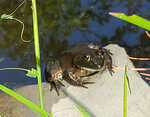, 0°
Wind: mph
Most people have a mobile phone now and carry it around wherever they go—and that includes going into field and forest.
Whether you are going for a two-hour fun hike or a full day’s …
Stay informed about your community and support local independent journalism.
Subscribe to The River Reporter today. click here
This item is available in full to subscribers.
Please log in to continue |


Most people have a mobile phone now and carry it around wherever they go—and that includes going into field and forest.
Whether you are going for a two-hour fun hike or a full day’s worth of fieldwork, many of these phones have some useful features.
Many phones have built-in GPS and compass, and there are mapping apps available that do a decent job. There is a caveat though: the more apps you use on the phone, the more power it consumes. Battery level can be drained quicker and that could be a factor on longer trips.
Carry a compass and hand-held GPS (or paper maps) for unfamiliar territory.
One of the big reasons I carry a phone with me, aside from having the ability to contact someone in case of emergency, is the ability to take photos. While not great for wildlife such as birds or far-off animals, due to the limited telephoto capability, phone cameras have a decent capability for panorama and macro shots.
If I can get close to an animal and have it stay still long enough to open the camera app on the phone, I can usually get a good shot.
Smartphones, iPhones etc. can also record sounds. One favorite birding app is Cornell’s BirdNET. You can record a bird’s call and the app will try to identify the bird species. I also use this app to record frog calls, etc., and then export the sound files into other apps. I have used this app to record many sound files for this column.
Many citizen-science programs have mobile phone apps to enter data and pictures from mobile phones; the PA Amphibian and Reptile Survey (PARS) is a good example. It’s an easy-to-use app that will upload images and user-entered data, and can upload GPS data from the phone as an observation location.
The PARS site can be found at paherpsurvey.org/.
Comments
No comments on this item Please log in to comment by clicking here